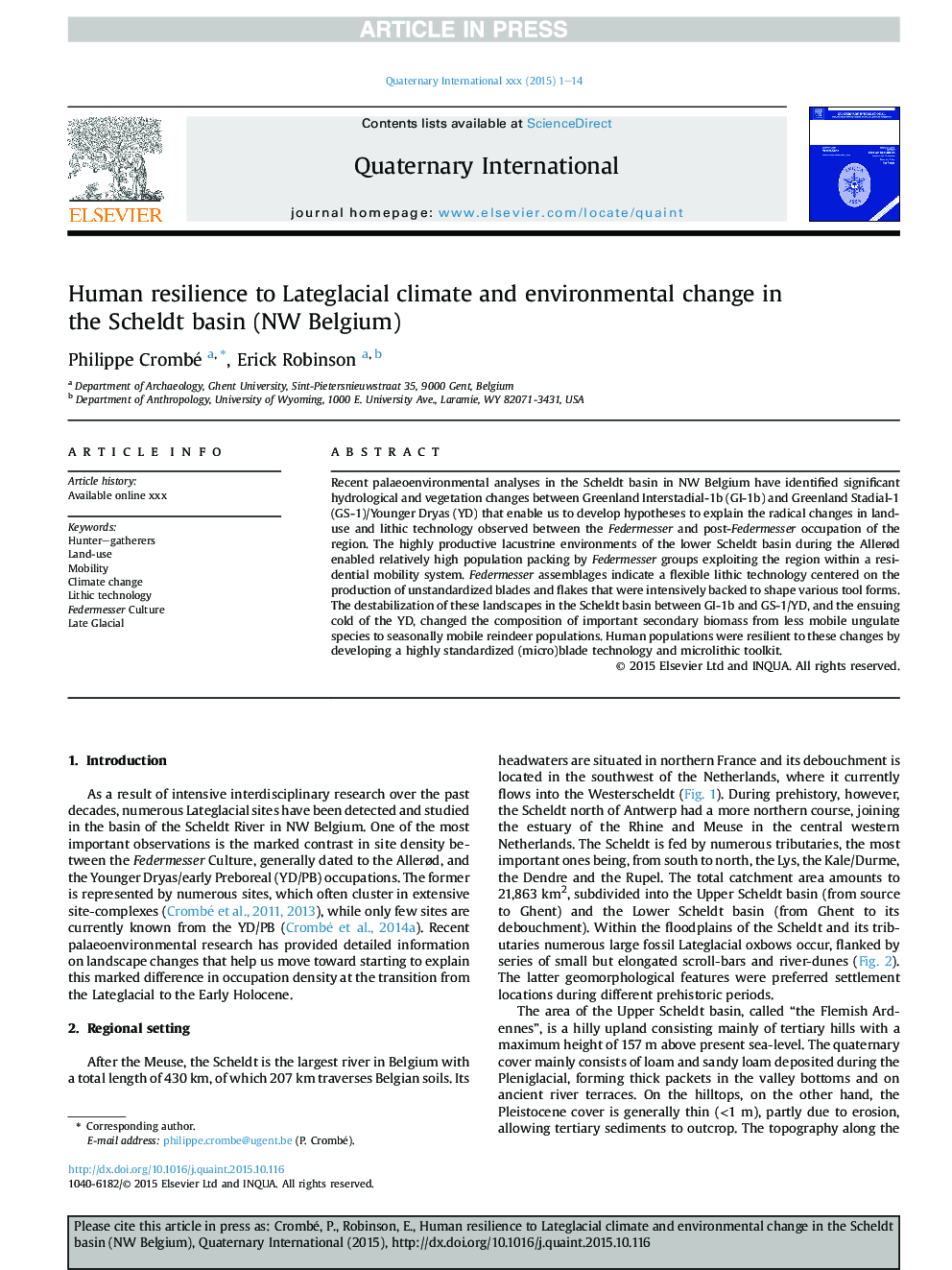| Article ID | Journal | Published Year | Pages | File Type |
|---|---|---|---|---|
| 5113528 | Quaternary International | 2017 | 14 Pages |
Abstract
Recent palaeoenvironmental analyses in the Scheldt basin in NW Belgium have identified significant hydrological and vegetation changes between Greenland Interstadial-1b (GI-1b) and Greenland Stadial-1 (GS-1)/Younger Dryas (YD) that enable us to develop hypotheses to explain the radical changes in land-use and lithic technology observed between the Federmesser and post-Federmesser occupation of the region. The highly productive lacustrine environments of the lower Scheldt basin during the Allerød enabled relatively high population packing by Federmesser groups exploiting the region within a residential mobility system. Federmesser assemblages indicate a flexible lithic technology centered on the production of unstandardized blades and flakes that were intensively backed to shape various tool forms. The destabilization of these landscapes in the Scheldt basin between GI-1b and GS-1/YD, and the ensuing cold of the YD, changed the composition of important secondary biomass from less mobile ungulate species to seasonally mobile reindeer populations. Human populations were resilient to these changes by developing a highly standardized (micro)blade technology and microlithic toolkit.
Related Topics
Physical Sciences and Engineering
Earth and Planetary Sciences
Geology
Authors
Philippe Crombé, Erick Robinson,
